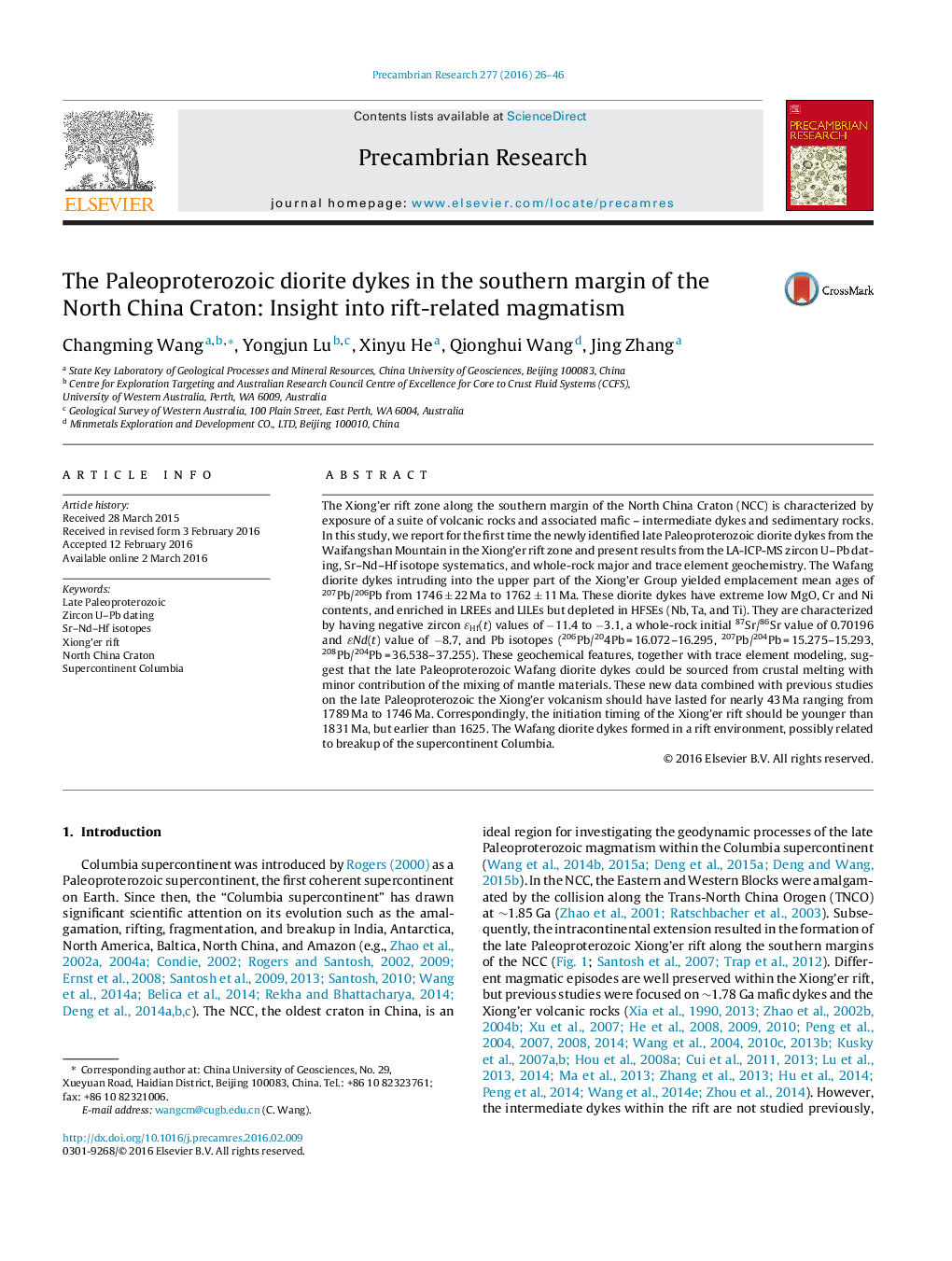| کد مقاله | کد نشریه | سال انتشار | مقاله انگلیسی | نسخه تمام متن |
|---|---|---|---|---|
| 4722426 | 1639598 | 2016 | 21 صفحه PDF | دانلود رایگان |

• These dykes constrain opening and closing ages of the Xiong’er rift.
• These dykes are remarkable evidence for the evolution of the North China Craton.
• These dykes provide important evidence for breakup of the supercontinent Columbia.
The Xiong’er rift zone along the southern margin of the North China Craton (NCC) is characterized by exposure of a suite of volcanic rocks and associated mafic – intermediate dykes and sedimentary rocks. In this study, we report for the first time the newly identified late Paleoproterozoic diorite dykes from the Waifangshan Mountain in the Xiong’er rift zone and present results from the LA-ICP-MS zircon U–Pb dating, Sr–Nd–Hf isotope systematics, and whole-rock major and trace element geochemistry. The Wafang diorite dykes intruding into the upper part of the Xiong’er Group yielded emplacement mean ages of 207Pb/206Pb from 1746 ± 22 Ma to 1762 ± 11 Ma. These diorite dykes have extreme low MgO, Cr and Ni contents, and enriched in LREEs and LILEs but depleted in HFSEs (Nb, Ta, and Ti). They are characterized by having negative zircon ɛHf(t) values of −11.4 to −3.1, a whole-rock initial 87Sr/86Sr value of 0.70196 and ɛNd(t) value of −8.7, and Pb isotopes (206Pb/204Pb = 16.072–16.295, 207Pb/204Pb = 15.275–15.293, 208Pb/204Pb = 36.538–37.255). These geochemical features, together with trace element modeling, suggest that the late Paleoproterozoic Wafang diorite dykes could be sourced from crustal melting with minor contribution of the mixing of mantle materials. These new data combined with previous studies on the late Paleoproterozoic the Xiong’er volcanism should have lasted for nearly 43 Ma ranging from 1789 Ma to 1746 Ma. Correspondingly, the initiation timing of the Xiong’er rift should be younger than 1831 Ma, but earlier than 1625. The Wafang diorite dykes formed in a rift environment, possibly related to breakup of the supercontinent Columbia.
Figure optionsDownload as PowerPoint slide
Journal: Precambrian Research - Volume 277, May 2016, Pages 26–46